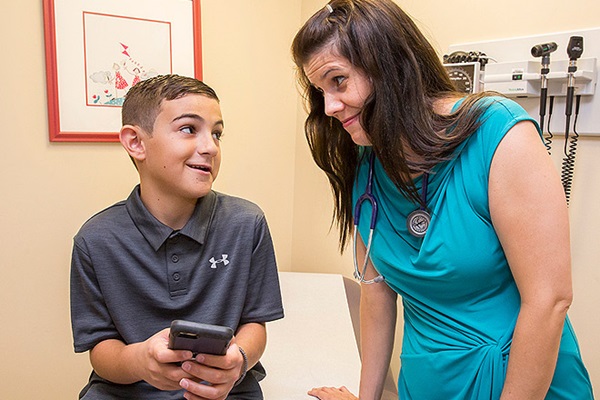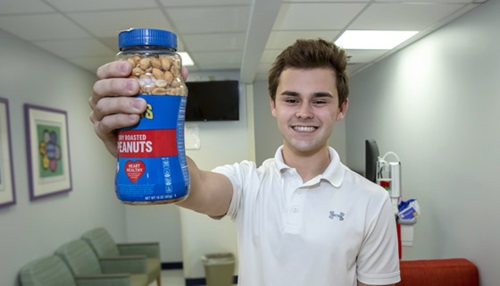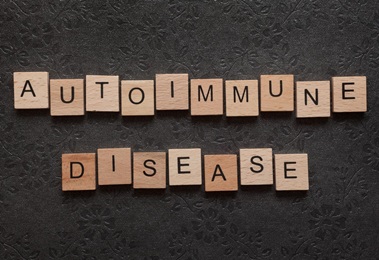Patient Story
Patient Story Nicholas: STAT1 Gain of Function

When 8-year-old Nicholas contracted pneumonia, his mom, Alicia, feared their brief respite was over.
"Our world was totally blown apart again," Alicia says. "It was happening again."
Nicholas had spent his first four years in and out of hospitals. Alicia and her husband, Nic, worried the pneumonia signaled the return of the mystery disease that had nearly killed their son.
They consulted with a new doctor, Jennifer Leiding, M.D., from John Hopkins All Children's Hospital in St. Petersburg, Fla. The bone marrow transplant team at Johns Hopkins All Children’s had been tracking Nicholas' progress. His was a complex story spanning many years and multiple specialists, institutions and therapies. He still lacked a diagnosis.
Meeting Leiding would change that.
Treating Symptoms Without a Known Cause
In August of 2005, Alicia gave birth to a healthy baby. At 6 months old, Nicholas got his first cold. Then the diarrhea started. It never went away.
Nicholas was hospitalized when a stomach virus turned into a high fever with thrush, a common painful oral yeast infection marked by white or yellow patches in the mouth and lips. By November of 2006, Nicholas had stumped every gastrointestinal (G.I.) specialist in the Wesley Chapel, Fla., area.
He was sent to an out-of-state children’s hospital, where they received the first hint at a diagnosis. Typically, the immune system protects the body by fighting harmful bacteria and viruses. In an autoimmune disorder, the immune system attacks healthy cells instead. IPEX syndrome goes a step further, and the body develops multiple autoimmune disorders.
Nicholas did not have IPEX syndrome, but he was diagnosed as IPEX-like. This indicated a possible cause: IPEX-like syndromes are caused by several different genetic mutations. And it also put his case into perspective. They were working with something rarer than one in a million.
Immunosuppression therapy kept his symptoms in check well enough to send him home for a few months, until the therapy quit working. At 2 years old, Nicholas was hospitalized again, this time with a severe lymph node infection that he could not fight.
No one could explain why Nicholas' immune system was behaving so erratically and they had exhausted all therapies. There was only one option left that might save him—a bone marrow transplant.
"At that point, we were desperate," Alicia says. "The infection could have taken him regardless."
Nicholas received a bone marrow transplant in January 2009. He was 3½ years old.
In a successful bone marrow transplant, the marrow cells engraft, which means they integrate into the body and start producing new stem cells. Five months after the transplant, Nicholas was losing donor cells rapidly. Only a small percentage of the donor marrow had engrafted. But clinically, he was getting better.
Nicholas moved to another children’s hospital where he continued to improve. Six months later, Nicholas went home.
He stayed in this state—lacking a diagnosis, clinically better but not cured, with mixed chimerism, a blend of his own bone marrow and the donor's—for the next four years. Until the pneumonia led him to Leiding.
Right Person, Right Time
Leiding, a St. Petersburg native, is a pediatric immunologist and allergy specialist in the Johns Hopkins All Children’s Cancer & Blood Disorders Institute and the University of South Florida (USF) Morsani College of Medicine.
During a three-year fellowship with the National Institute of Allergy and Infectious Diseases, she worked closely with other top researchers on genetic mutations and their impact on the immune system. She worked with a gene called STAT1, which stands for signal transducer and activator of transcription-1. Defects in STAT1 can present themselves in multiple ways. The lab she trained in discovered many of the disease presentations of STAT1 mutations.
"It was a little bit of the right person at the right time," says Leiding, USF’s medical director of the Multidisciplinary Immunology Service at Johns Hopkins All Children’s. "It was very obvious to me this could be what he had."
A cheek swab and specialized lab testing confirmed it. Nicholas had a STAT1 Gain of Function (GOF-STAT1) mutation in his immune system. That meant his body responded to threats, but unpredictably, and attacked healthy cells as well as harmful ones.
Leiding took an interest in Nicholas' case. Medical journals had published only two other cases where patients with this specific presentation of the STAT1 mutation received a bone marrow transplant. Both of those patients had died.
Leiding recognized how unique Nicholas' story was. Transplant as a potential therapy for GOF-STAT1 had not been studied. She reached out to Dr. Troy Torgerson, an immunologist at Seattle Children's Research Institute who had treated multiple IPEX-like patients. Together they searched for similar cases across the globe.
They spent months collaborating with other physicians as far away as Japan, acquiring data, and analyzing the results. They identified 15 people with confirmed GOF-STAT1 mutations who received bone marrow transplants.
The data indicated that, in some cases, the transplant can cure patients. However, it has only been used in the direst situations, and the risk of death is high. Six of the patients survived. In five of those patients, the transplant engrafted 100 percent, so they only have the donor's bone marrow. Nicholas is the only survivor in the world with mixed chimerism, that mix of his own bone marrow with the donor’s.
The Journal of Allergy and Clinical Immunology is publishing the results of the research by Leiding and her colleagues. This sets the stage for a prospective study on transplant as a potential therapy for GOF-STAT1 patients and encourages more research.
Nicholas Continues to Pioneer Therapies
Nicholas is still blazing new medical trails. In August, 2016, the G.I. troubles and dehydration returned. Leiding thought it was the disease returning and he might need another transplant. He was flown to Seattle to see Torgerson.
"There was a therapy we wanted to explore with to see if we could buy time instead of re-transplanting him," Alicia says.
The new therapy is a JAK-inhibitor. Janus kinase inhibitors interfere with specific enzymes, and disrupt the haywire immune response. They are used in adult cancer therapy but are not FDA-approved for children. Nicholas received an exception because of his condition.
Today, Nicholas is the healthiest he has ever been. Since starting the JAK-inhibitor, he no longer has chronic diarrhea. As an active middle schooler, he earns straight A's and plays baseball. He is able to live at home and receive care locally from Leiding, an expert in his specific mutation who has a network of collaborating physicians around the globe.
"He's helping everyone because his story is so unique and his diagnosis is so rare," Alicia says. "We really think our son is writing his own story."
Treatment USF Pediatric Allergy/Immunology Program at Johns Hopkins All Children's Hospital

Johns Hopkins All Children’s Hospital in St. Petersburg, Florida, provides a range of testing for children and teens with allergies and immunologic conditions. Common symptoms you might see if your child has an allergic or immunologic condition can include chronic runny nose, cough, itchiness or hives; reaction to certain drugs, insects or vaccines; or recurrent infections.




